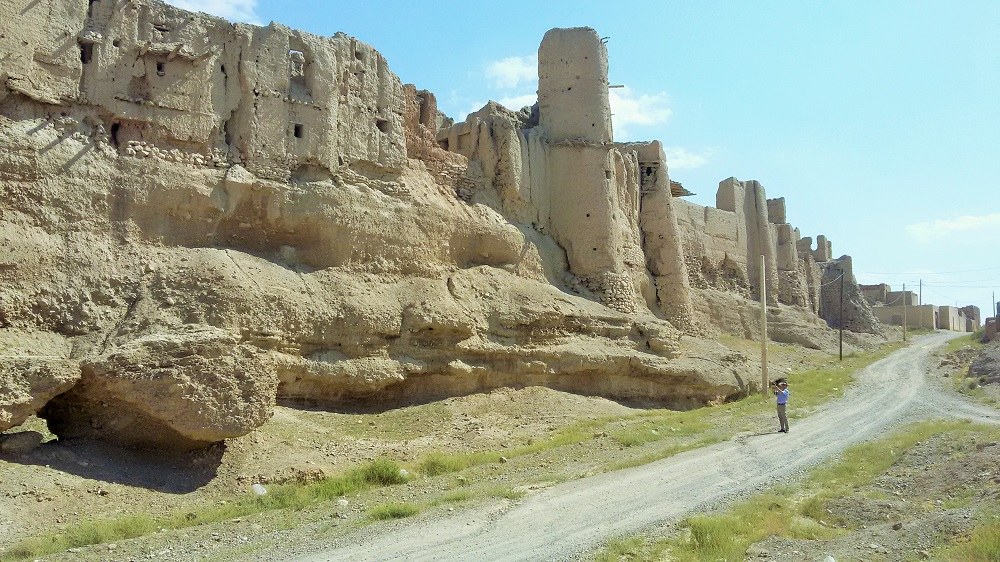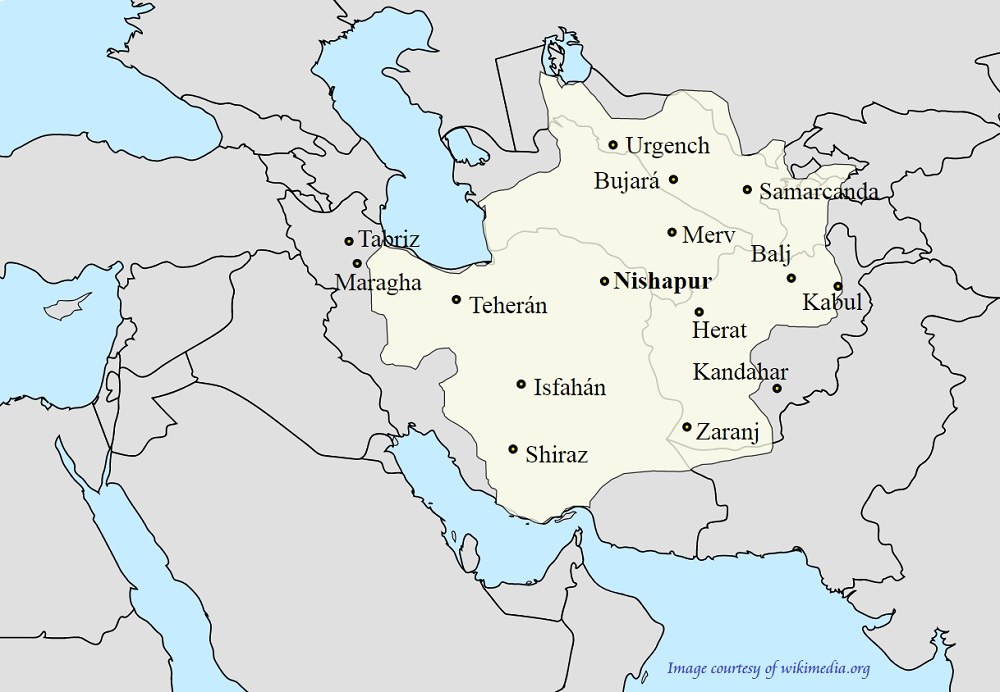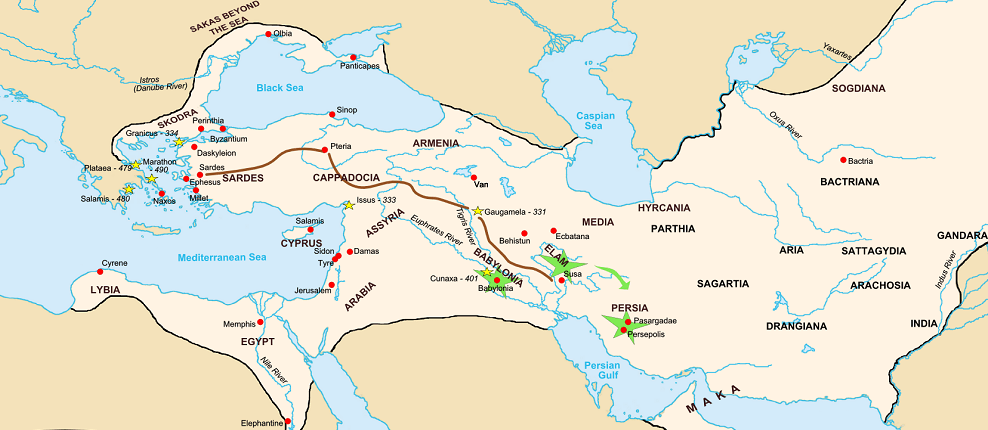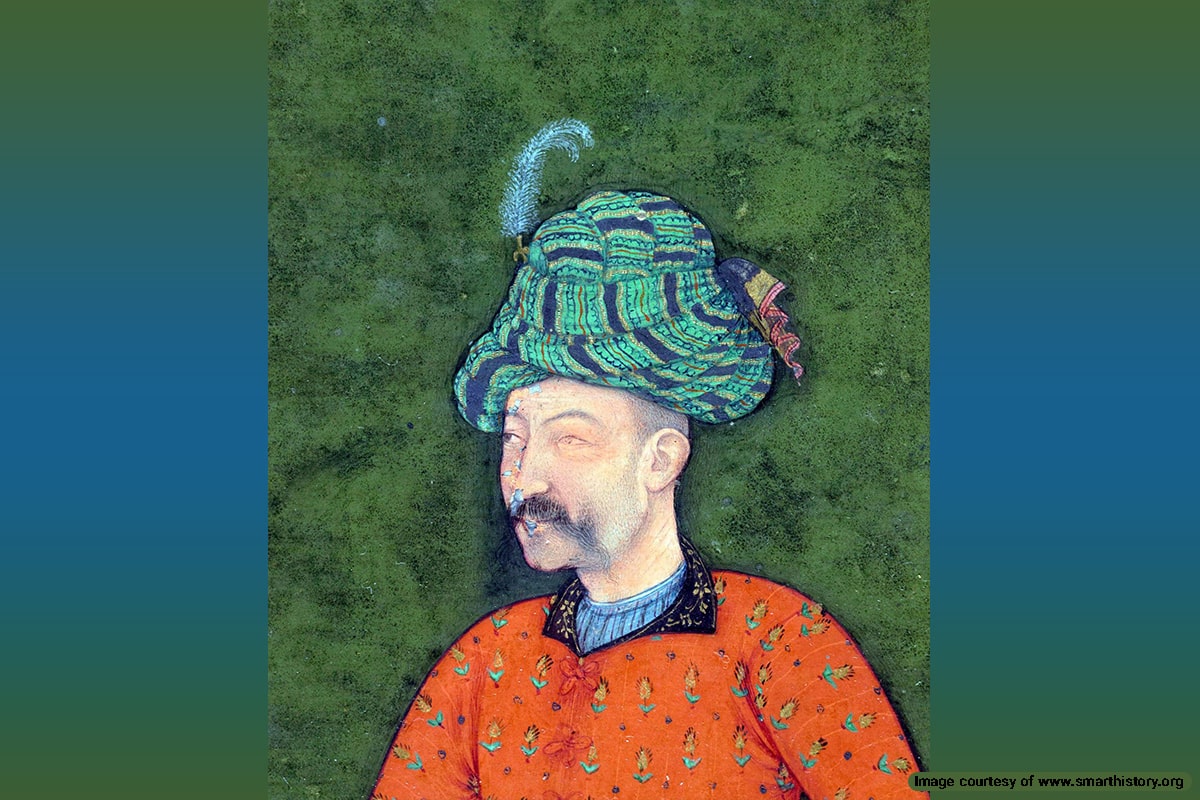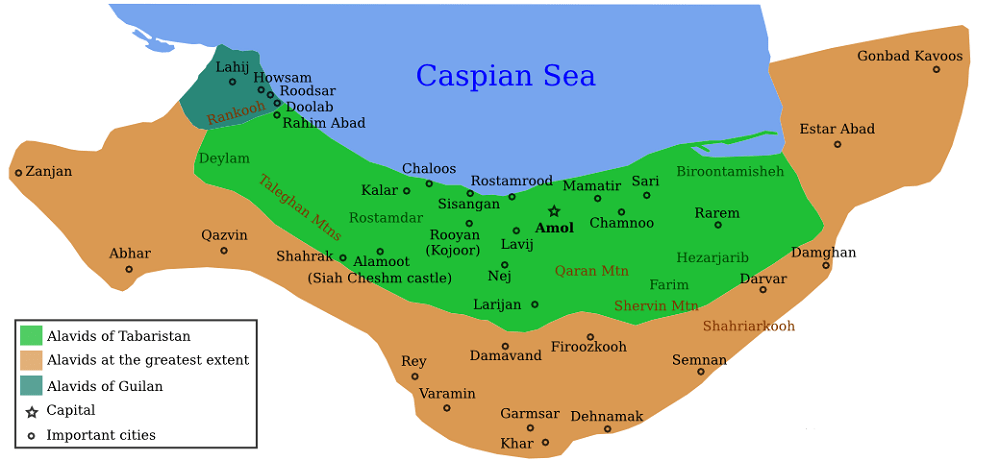
As the name implies, Alavids refer to the followers of Ali, the first Imam of Shiites. Following the history of Alavids, you will find out that they were a group of Shiites following their leaders called Hasan-Ebn-e-Zeid. Because of this, they were also called Zaydis. They were pro-Imamate and against the caliphate system. Therefore, they were not liked by the Abbasid rulers.
They started urging Iranians to follow their doctrine against the Baghdad rulers. Even some of the believers of ancient Iranian beliefs were attracted to them. This made Baghdad caliphs worried.
After Hasan-Ebn-e-Zeid had entered Tabarestan region, local people and Daylamites declared their alliance with him and began supporting him financially. So, he could initiate his religious campaign with peace of mind. Then, he established a religious administration that was entirely different from that of the Abbasids.
Alavids at South of the Caspian Sea
Hasan-Ibn-e-Zeid started to detach Abbasids’ agents from any positions in the area. As the caliphate system had not taken them seriously, they succeeded to grow in number and power in Tabarestan and Royan at the South of the Caspian Sea.
Despite this, The Alavids Imam was defeated by Taherids later and fled to Daylam. He continued his teachings there and could regain Tabarestan and Gorgan after a short while. Even Yaghub Leith could not take these regions from them.
Alavids Were Taken Seriously
Later when Hasan-Ebn-e-Zeid’s brother took over the Imamate (leadership) of Alavids, he attracted the attention of Baghdad’s Shiites. It was then that Abbasids considered them a serious threat. Alavids had decided to seize Khorasan, but they failed and Samanids managed to bring them under their rule.
Consequently, Gil and Daylam tribes resisted against the influence of Samanids for some time. At the core of these movements, there could have been felt eager sentiments of anti-caliphate and affection pro-Imamate inclinations.
Alavids’ Impact on the Following Movements
Alavids ascended to power later in Yemen and played an intermediary role between Yemen and Egypt for successive centuries. As a result of their achievements, the areas at the South of the Caspian Sea turned into a Shiite center leading to the formation of Buyid government and Ismailis movement at Alamoot.
Iranians’ Endeavors
Iranians never kept quiet indifferently from the outset of Taherids’ reign to the end of Alavids’ rule at in Tabarestan. They carried on resisting in any possible way. They combined ethnic and religious elements and helped the formation of Islamic culture and knowledge on a remarkable scale and manner.
The history of Alavids indicates that Iranians played a major role in developing religious fields of study like the interpretation of Koran, wisdom, medicine, mathematics, astronomy, etc. Also, Iranians’ cultural achievements during this period are significant. Of course, they had to write their books in Arabic as it was the scholastic language of the time and the language imposed by Arab rulers from Baghdad.







